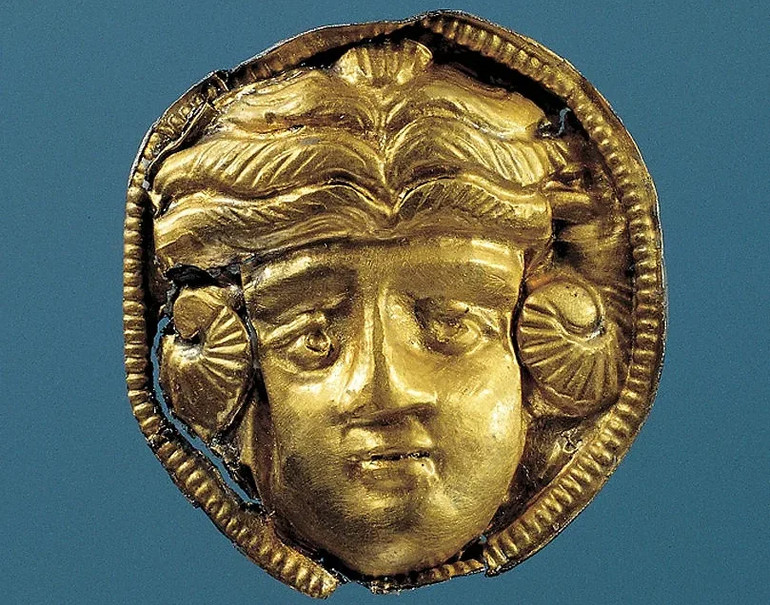A bronze portrait of Alexander the Great was found on the island of Denmark
[ad_1]
Ancient bronze portrait of Alexander the Great, 26-28 millimeters in size.
Morten Petersen, Westschelland Museum
An ancient bronze portrait of Alexander the Great was found on the Danish island of Zeeland. This may indicate that the commander was known in these parts.
The size of the portrait is 26 by 28 millimeters, writes Arkeonews.
The miniature portrait was discovered by amateur archaeologists Finn Ibsen and Lars Danielsen near the city Ringstead. He incast from a bronze alloy containing lead.
Thanks to the wavy locks of hair and ram’s horns near the ears, archaeologists recognized Alexander the Great in the image.

Gilded silverware found in the Illerup River valley near Skanderborg in Denmark.
“This is a unique find in Scandinavia, which is associated with one of the most famous personalities in world history“, – said Frirk Oldenburger, an archaeologist at the Vestsjælland Museum, where the miniature portrait was transferred.
However, there is currently no common opinion among scientists about what function did the bronze fittings perform: was it a decorative disk for a shield or a buckle for a belt.
At the same time, identical gilded silver utensils were previously found in the valley of the Illerup River near the city of Skanderborg (Denmark). It was attached to the shield.
It is noted that during the time of Emperor Caracalla, who lived in 198-217 AD and considered himself the reincarnation of Alexander the Great, a great battle took place where two Germanic armies clashed.
As a result, many people died, and all the remaining weapons – swords, bows, arrows, spears and shields – were sacrificed to the gods and thrown into the lake.
During the excavation of the lake, archaeologists discovered shields decorated with tiny decorative disks with portraits of warriors. One of them featured a portrait of Alexander the Great, identical to the one discovered by amateur archaeologists.
Alexander the Great lived in 356-323 BC. He was the greatest general of antiquity, whose empire stretched from Greece to India. At the age of 32, he died in Babylon.
We used to reportedthat a black banquet room with frescoes on the walls was excavated in Pompeii.
[ad_2]
Original Source Link











